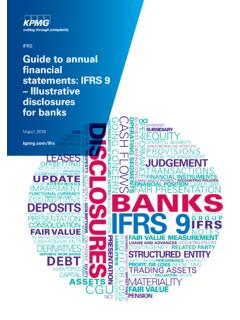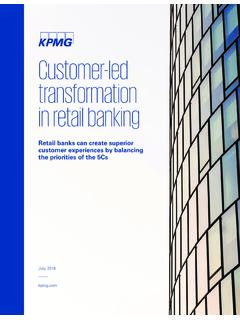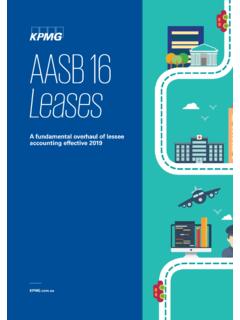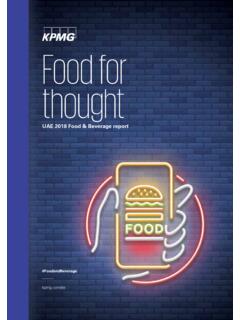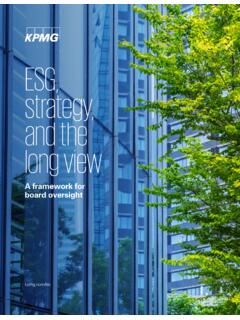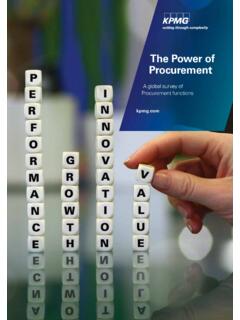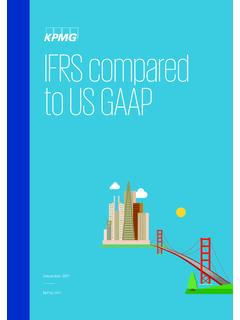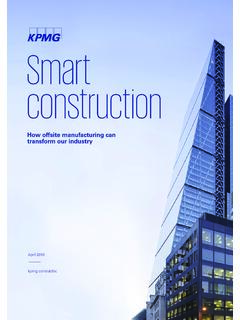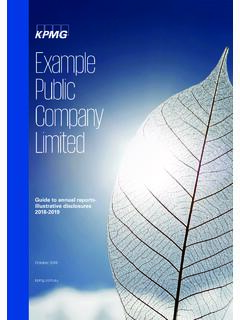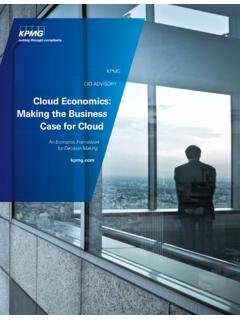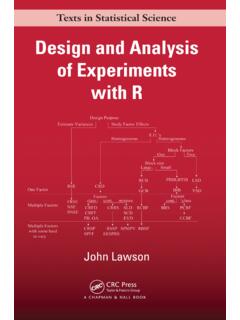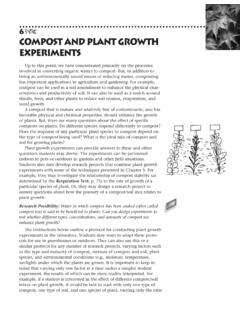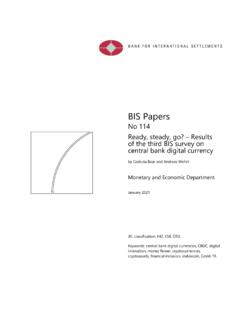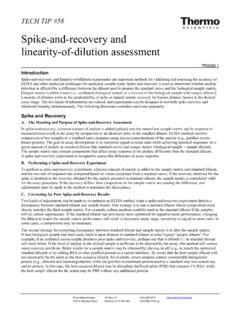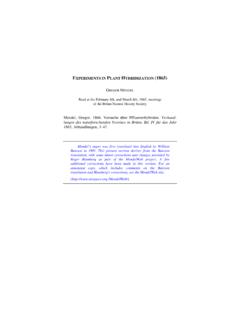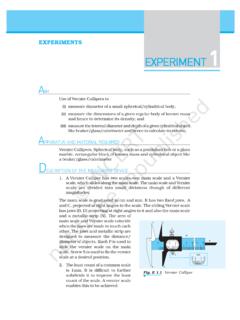Transcription of KPMG Global Agile Survey 2019
1 Agile Transformation From Agile experiments to operating model transformation: How do you compare to others? 2019 Survey on Agility 2 Preface Preface What comes to mind when you think of Agile ? Driven by leadership ambition to remain relevant in the digital future, we see in both our Global CEO Outlook 2019 and our Harvey Nash/KPMG CIO Survey 2019 that Agile is Do you think of IT? Realising results fast? Developing software? increasingly a strategic priority towards becoming future ready. In this Survey , we would Or do you think broader? like to dive into this topic further and involve the target operating model on how Agile can Working as a team? be implemented. Working with multiple self-organising teams? Collaborating with customers?
2 We see that we live in a diverse world our Survey shows Agile maturity is different from Integrating business and IT? country to country. Originally a European Survey , we concluded the Survey with responses from more than 120 participants from 17 countries, which include: There is no single answer. Originally defined in 2001 in the Agile Manifesto as a reaction to Argentina Denmark Poland the slow, bureaucratic and stifled creativity experienced in traditional waterfall methods of Austria France Singapore software development, Agile formed the basis for a revolution in the way software is Belgium Germany Sweden developed. Bolivia Hong Kong The Netherlands Brazil Italy Turkey Nowadays we see this revolution increasing its footprint as principles to define entire Czech Republic Norway organisations and is vastly outgrowing the development of software on a team level.
3 Digitisation is driving the need for flexibility and the increased role of technology in We hope you enjoy our Survey ; that it contributes to your insights on how to apply agility delivering value. Scaling agility across teams and organising through product-oriented or for your organisation, and supports you in quickly learning how to deal with the typical value stream oriented organisations appears to be the new normal, replacing outdated and challenges. traditional demand-supply models. Tim de Koning William Koot This Survey is driven by our curiosity on this matter and on how organisations apply Agile Digital Agile Practice Lead EMA region EMA leader Digital Strategy methods ranging from small teams to large corporates that work with thousands of KPMG in The Netherlands KPMG in The Netherlands employees together in a smart way delivering value to the company every day.
4 Benefits of Agile Better Faster Smarter Happier 3 Table of Contents Page Results at a Glance 4. Chapter 1: Introduction Short introduction to the reasons for the rise in popularity of Agile and why Agile makes sense 5. Chapter 2: Strategy & Ambition The benefits of Agile and why it should be part of your digital strategy & ambition 6. Chapter 3: How to Apply Agile Agile principles and methodologies used to drive an Agile transformation successfully 12. Chapter 4: Operating Model Impact Agility requires changes to every part of the operating model and key challenges to adopting Agile 18. Chapter 5: Conclusion Summarise the total insight of the Survey 31. Chapter 6: Background 33. Appendix: Agile framework and methods compared 41.
5 2019 KPMG Advisory 4 Results at a glance Agile is extending! Current position vs. Expectation in 3 Years Main drivers for agility Challenges encountered in shifting towards agility 38%. Now Faster product delivery In 3 Years adjusted to changing 68% Culture and Performance 32% 59%. customer needs Management 23%. 21% Increased Flexibility 45% Flawless operations 48%. 18% 15% 14%. 12% Solve silos between Scaling beyond 45% 44%. 10% Business & IT team level 8%. 4% 5%. Fast & Continuous improvement of 42% Limited Suitability for 41%. customer satisfaction Systems Not Using Agile Pilots Agile at core of Agile at Scale Agile at Selected Agile at Enterprise Agile IT Functions IT / Unit enables Agile transformations Business enables Agile transformation Needed for digital agenda 26% Availability of resources 39%.
6 With Agile delivery 26% 70%. Driving product delivery Employee and culture at the An operating model challenge Agile is extending! speed and customer heart of the transformation Although culture and skilled We see Agile being scaled with 70% of satisfaction There is no doubt that adopting Agile employees are a key challenge, we see respondents indicating an ambition to With over 68% most organisations values and principles beyond the team organisations struggling across the integrate both Business and IT enabled state faster product delivery as one of level requires a cultural shift. This is operating model when scaling agility. Agile transformation in the next 3 years. their key drivers for agility, while emphasised by 59% of respondents This highlights our view that this is an The most commonly used framework customer satisfaction comes fourth mentioning culture and performance operating model challenge influenced among respondents for scaling is SAFe.
7 With 42%. In addition to quick delivery management as their key challenge in by not only the employees, but also We also see Agile quickly outgrowing to the customer, we see organisations their shift towards agility. 39% of operations and processes, front-end IT development into business striving to finally solve the gap between respondents states that availability of technological challenges such as units and becoming an integrated business and IT, as well as solve the resources with Agile delivery is as an Continuous Improvement (CI) /. approach to deliver business value across silo thinking inherent to the demand- important challenge. Continuous Delivery (CD) and the entire value chain. supply model. performance management.
8 2019 KPMG Advisory 5 Introduction Remain relevant in the digital era through agility Digitisation affects that take years to complete. Organisations need quick It can mean a fundamental shift in how organisations results and key stakeholders need influence. At the same function when agility is truly embraced. The entire operating organisations fundamentally time, technology is becoming increasingly intuitive and easy model of organisations potentially changes. In our view this Digitisation is a key phenomenon that will affect to use, giving users greater autonomy to harness its ranges from structure and governance, to capabilities &. organisations fundamentally. Digital is not a specific potential1. processes, technology, sourcing, people & culture, and technology or a solution, but is simply a word that describes performance management.
9 All these domains are optimised our world today. Advances in technology have blurred the We see new technology-driven organisations entering the for customer focus, speed and flexibility, while increasing lines between the physical and virtual world, resulting in the market, challenging existing business models through rapid transparency, predictability and control, and while lowering emergence of digital disruptors that provide new ways for technology-driven and customer-focused innovations and costs through efficiency. These changes typically require a organisations to create value. Speed and flexibility have value delivery. Todays customers are used to the lot from employees as the environment they are used to become drivers of value for organisations, and as such, have experiences they have with the large tech firms and changes.
10 Both structural items such as functions, a fundamental impact on the operating model of platforms and expect that other organisations meet the collaboration mechanisms and processes change, but also organisations. same standards. culture and values are impacted. We believe digital is broad in its impact, but also industry- Organisations need to react through providing agility Although these changes are severe, we typically see specific. It goes far beyond the front office to facilitate To most organisations it is no longer the question whether employee happiness and company attractiveness increasing true enterprise-wide business transformation, enabling you should react to digital developments, but how and to as the organisation embraces agility and steps into the digital organisations to build a sustainable competitive which extent.
